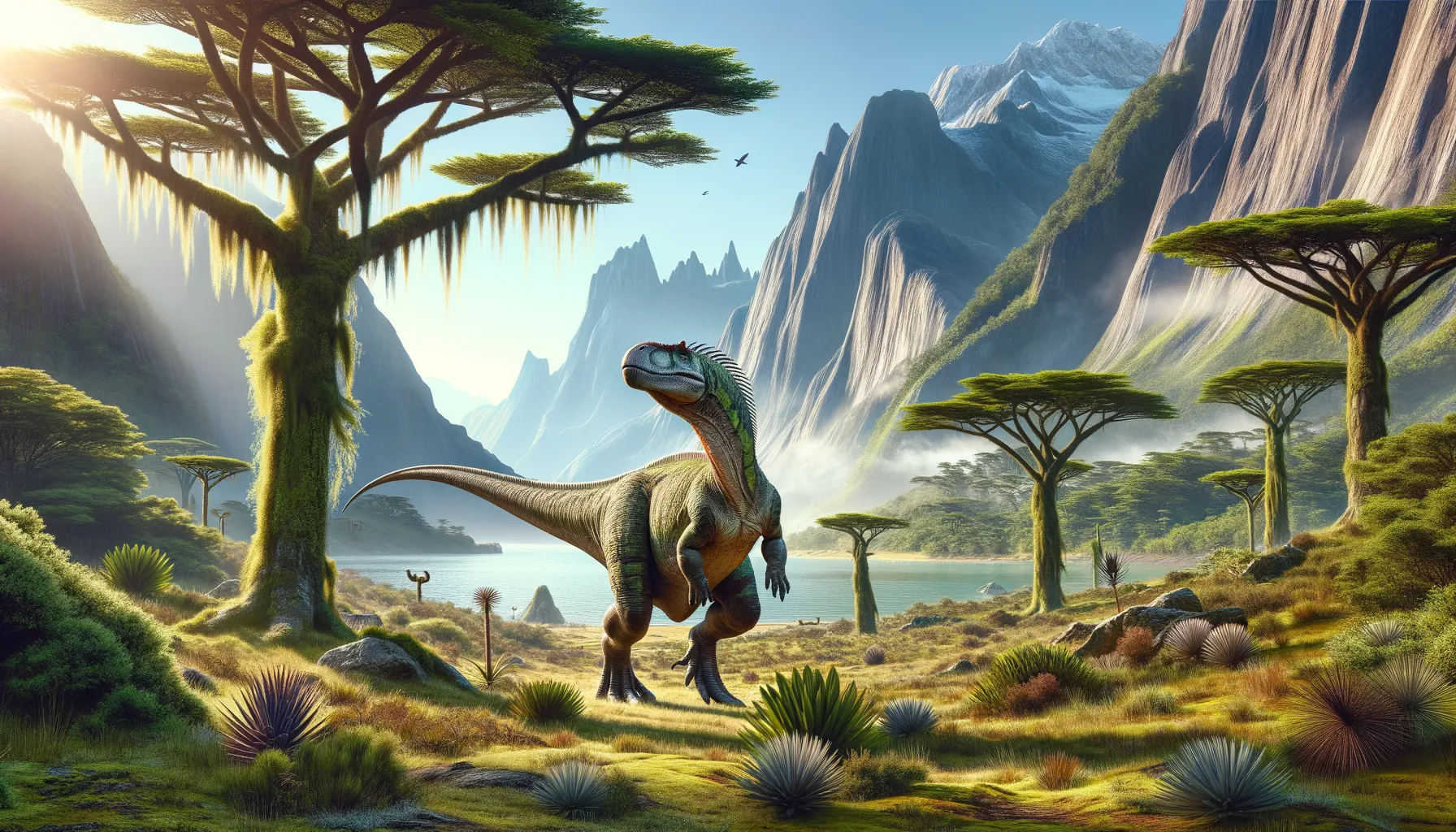
Bonapartesaurus
Graceful giant of the ancient plains.
Period
Cretaceous
Length
Up to 30 feet long.
Height
Approximately 10 feet tall.
Weight
Around 3 to 4 tons.
Bonapartesaurus was a large herbivorous dinosaur that roamed ancient lands during the Late Cretaceous period. Known for its robust physique, it belonged to a group of dinosaurs called hadrosaurids, which were the 'duck-billed' dinosaurs. It primarily resided in South America and has become crucial in understanding the diversity of dinosaur species in this region. This dinosaur represents the astonishing adaptations that occurred across different environments in prehistoric times.
Diet
Bonapartesaurus was herbivorous, primarily feeding on plants. It relied on its broad, flat beak to graze on an abundance of low-lying vegetation found in its environment.
Hunting
As a herbivore, Bonapartesaurus did not hunt other animals. It likely used its size and any defensive features to avoid predators and spent much of its time foraging for food.
Environmental challenges
The Late Cretaceous period was characterized by varying climates, which dictated the availability of vegetation. Bonapartesaurus had to adapt to changes in plant life due to seasonal shifts. Predators were a constant threat, requiring constant vigilance for survival. These dinosaurs might have faced competition for food from other herbivores inhabiting the same regions.
Speed
Moderate, capable of fast sprints.
Lifespan
Estimated around 70-80 years.
First discovery
Discovered in Argentina in 1983.
Fun Facts
- Bonapartesaurus was named in honor of the famous Argentinian paleontologist José Bonaparte.
- This dinosaur lived during the Late Cretaceous period, around 70 to 66 million years ago.
- Bonapartesaurus was a herbivorous dinosaur, meaning it primarily ate plants.
- The dinosaur was a type of hadrosaur, commonly known as duck-billed dinosaurs.
- Fossils of Bonapartesaurus were discovered in Patagonia, Argentina.
- Like other hadrosaurs, Bonapartesaurus likely had a crest on its head that may have been used for communication.
- This dinosaur's ability to move on both two and four legs helped it to forage and escape from predators.
Growth and Development
Juvenile Bonapartesaurus likely experienced rapid growth to avoid predation. It probably took several years for them to reach their full adult size. Their development stages would have been marked by gradual increases in their size and strength. Parental care may have played an essential role in the early years of their lifecycle.
Habitat
Bonapartesaurus lived in varied environments ranging from floodplains to lush forested areas. These environments provided ample vegetation for its herbivorous diet. Water sources were likely crucial for their survival, especially during dry seasons. The South American continent offered a diverse range of habitats which this dinosaur thrived in.
Interaction with other species
Sharing its habitat with other herbivorous and carnivorous dinosaurs, it had to navigate competitive interactions. Its mismatched size might have deterred some predators, facilitating coexistence. Competition for food resources would have been inevitable among different herbivore species. Symbiotic relationships might have existed with smaller species that thrived on low-lying vegetation.
Natural lifespan
Bonapartesaurus could naturally live up to 70-80 years in the wild.
Reproduction
Bonapartesaurus was oviparous, laying eggs in nests. Parental care may have been present, especially in protecting the nests from predators. Nesting in communal areas might have offered greater protection for the eggs. They had to adapt their reproductive strategies based on environmental conditions and threats.
Social behaviour
Bonapartesaurus might have lived in herds for safety and social support. Herd behavior could have been crucial for migration in search of food and water. Social interactions within these herds might have governed their movement and foraging patterns. Their social structure would have contributed significantly to their survival and success as a species.
Fossil locations
The first fossils were discovered in Patagonia, Argentina. Subsequent discoveries have helped map the range of this dinosaur across South America. Fossil findings have provided insights into its diet and social structures. The sites are crucial in understanding the regional diversity of Cretaceous dinosaurs.
